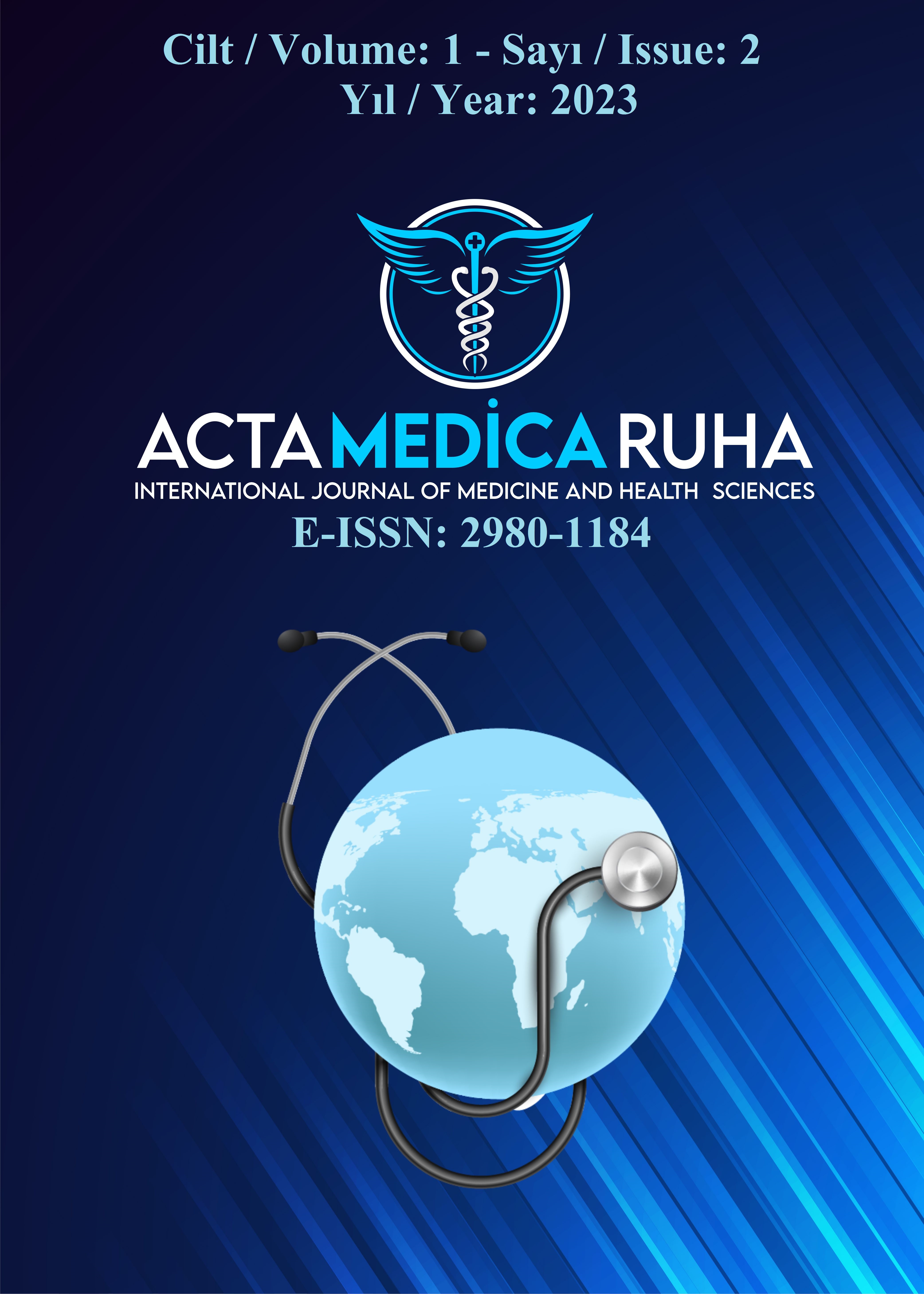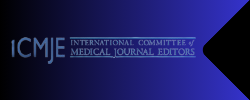Utilization Of Human Corionic Gonadotropin Hormone In The Treatment Of Undescended Testicle
Research Article
DOI:
https://doi.org/10.5281/zenodo.7854833Keywords:
Undescended Testis,, Human Chorionic Gonadotropin,, Testicular Location,, Testicular Volume.Abstract
Introduction: Undescended testis is one of the most common congenital anomalieswith an incidence up to 9% in term male babies. Its incidence is closely related to the week of birth and weight.
Objective: In this research we aimed to elucidate the response of undescended testicles to Human Chorionic Gonadotropin treatment and to investigate whether patient age, total hormone dose, hormone administration time and anatomical localization of the testis affected this response.
Method: A total of 45 patients with undescended testicles, whose age range was between 5 months and 11 years and were treated with hCG have been enrolled in this retrospective analysis. Human Chorionic Gonadotropintreatment has been administered to patients who were followed-up by the same pediatric surgeon. Testicular location, testicular volume, penis size, scrotal pigmentation and genital hair growth were evaluated before and after hormone therapy. Patients were divided into five groups according to their age as: Group A (<12 months), Group B(12 to 36 months), Group C (37 to 60 months), Group D (61 to 84 months) and Group E (>84 months).
Results: Following hCG treatment, 23 (46.9%) out of 49 individuals had non-palpable testes and they were located in the inguinal canal and suprascrotal descended into the scrotum. It was found that in 7 subjects testes did not completely descend into the scrotum, although they were displaced from their settlements to the scrotum before hCG treatment. This result was considered as treatment failure. Of the 10 patients that were considered as gliding testicles, all descended into the scrotum.
Conclusion: In conclusion, hormonal therapy appears to be of limited benefit in cases of true undescended testis and is more effective in cases with distal undescended testicles than in other abnormally located cases. However, the growth of the funiculus spermaticus structures as a result of hormone therapy, albeit partially, facilitates future surgical intervention.
References
Radmayr C, Bogaert G, Dogan HS, et al. Guidelines on pediatric urology. EAU guidelines. EAU Guidelines Office, Arnherm, The Netherlands. 2019 http://uroweb.org/guidelines/paediatric-urology/
Hutson JM, Li R, Southwell BR, Petersen BL, Thorup J, Cortes D. Germ cell development in the postnatal testis: the key to prevent malignancy in cryptorchidism? Front Endocrinol (Lausanne). 2013; 3: 176.
Niedzielski JK, Oszukowska E, Słowikowska-Hilczer J. Undescended testis -current trends and guidelines: a review of the literature. Arch Med Sci. 2016 Jun 1;12(3):667-77.
Braga LH, Kim S, Farrokhyar F, Lorenzo AJ. Is there an optimal contralateral testicular cut-off size that predicts monorchismin boys with nonpalpable testicles? J Pediatr Urol. 2014 Aug;10(4):693-8.
Snodgrass W, Bush N, Holzer M et al. Current referral patterns and means to improve accuracy in diagnosis of undescended testis. Pediatrics. 2011;127(2):e382-8.
Denes FT, Saito FJ, Silva FA. Laparoscopic diagnosis and treatment of nonpalpable testis. Int Braz J Urol. 2008; 34: 329.
Abacı A, Çatı G, Anık A, Böber E. Epidemiology,Classification and Management of Undescended Testes:Does Medication Have Value in its Treatment? J Clin ResPediatr Endocrinol. 2013;5(2):65-72.
Ramareddy SR, Alladi A, Siddappa OS. Ectopic testis inchildren: Experience with seven cases. Journal of PediatricSurgery. 2013; 48: 538–41.
Keys C, Heloury Y. Retractile testes: A review of the currentliterature. Journal of Pediatric Urology. 2012; 8: 2-6.
Kolon TF, Herndon CD, Baker LA, et al. American Urological Assocation. Evaluation and treatment of cryptorchidism: AUA guideline. J Urol. 2014 Aug;192(2):337-45.
Tasian GE, Copp HL. Diagnostic performance of ultrasound in nonpalpable cryptorchidism: a systematic review and meta-analysis.Pediatrics. 2011 Jan;127(1):119-28.
Job JC, Toublanc JE. Endocrine and immunological findings in cryptorchid infants. Horm Res. 1988; 30: 167-172.
Karpe B, Eneroth P, Ritzen EM. LHRH treatment in unilateral cryptorchidism: effect on testicular descent and hormonal response. J Pediatr. 1983; 103: 892-897.
Park KH, Lee JH, Han JJ, Lee SD, Song SY. Histological evidences suggest recommending orchiopexy within the first year of life for children with unilateral inguinal cryptorchid testis. Int J Urol. 2007 Jul;14(7):616-21.
Rajfer J. Congenital Anomalies of the Testis. In: Walsh PC, Retik AB, Stamey TA, Vaughan ED,Eds. Campbell’s Urology. 6th Ed., W.B. Saunders Company. 1992; 72: 1543-1562.
Hadziselimovic F, Huff D, Duckett J, Perzog J, Elder J, Snyder H, Buser M. Long-term effect of luteinizing hormone- releasing hormone analogue (Buserelin) on cryptorchid testes. J Urol. 1987; 138: 1043-1046.
Elderwy AA, Kurkar A, Abdel-Kader MS, et al. Laparoscopic versus open orchiopexy in the management of peeping testis: a multi-institutional prospective randomized study. J Pediatr Urol. 2014. 10: 605.
Esposito C, Iacobelli S, Farina A, Perricone F, Savanelli A, Settimi A. Exploration of inguinal canal is mandatory in cases of non palpable testis if laparoscopy shows elements entering a closed inguinal ring. Eur J Pediatr Surg. 2010 Mar;20(2):138-9.
Job JC, Toublanc JE. Endocrine and immunological findings in cryptorchid infants. Horm Res. 1988; 30: 167-172.
Christiansen P, Muller J, Buhl S. Treatment of cryptorchidism with human chorionic gonadotropin or gonadotropin releasing hormone. A double blind controlled study of 243 boys. Horm Res. 1988; 30: 187-192.
Adamsen S, Aronsen S, Börjesson B. Prospective evaluation of human chorionic gonadotropin in the treatment of cryptorchidism. Acta Chir Scand. 1989; 155: 509-514.
Cacciari E, Cicogoni A. The testicular descent. Pediatr Med Chir. 1989; 11: 585-590.
Snodgrass WT, Yucel S, Ziada A. Scrotal exploration for unilateral nonpalpable testis. J Urol. 2007 Oct;178(4 Pt 2):1718-21.
Thomas R, Holland AJA. Surgical approach to the palpable undescended testis. Pediatr Surg Int. 2014; 30:707–13.
Penson D, Krishnaswami S, Jules A, McPheeters ML. Effectiveness of hormonal and surgical therapies for cryptorchidism: a systematic review. Pediatrics. 2013 Jun;131(6):e1897-907.
Cho A, Thomas J, Perera R, Cherian A. Undescended testis. BMJ. 2019;364:l926.
Garagorri JM, Job JC, Canlorbe P. Results in early treatment of cryptorchidism with human chorionic gonadotropin. J Pediatr. 1982; 101: 923-926.
Hadziselimovic F. Cryptorchidism. In: Gillenwater JY, Grayhack JT, Howards SS, Duckett JW,Eds. Adults and Pediatric Urology. 2nd Ed, 1991; 59: 2217-244.
Seppo Taskinen, Outi Hovatta, Sakari Wikstrom, Early Treatment of Cryptorchidism, Semen Quality and Testicular Endocrinology. 1996;156(1): 82-84
Novaes HF, Carneiro Neto JA, Macedo A Jr, Barroso Júnior U. Single scrotal incision orchiopexy - a systematic review. Int Braz J Urol. 2013;39(3):305-11.
Kozminski DJ, Kraft KH, Bloom DA. Orchiopexy without Transparenchymal Fixation Suturing: A 29-Year Experience. J Urol. 2015;194(6):1743-7.
Downloads
Published
How to Cite
Issue
Section
License
Copyright (c) 2023 Acta Medica Ruha

This work is licensed under a Creative Commons Attribution 4.0 International License.











